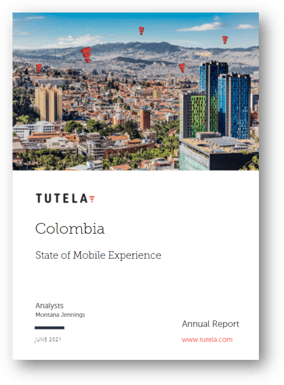June 2021
The telecoms industry continues to play an integral role in keeping businesses and individuals moving forward through these uncertain times, by providing quality mobile experiences powered by reliable wireless connectivity. This is no easy task as mobile operators also experienced their own productivity and revenue losses like any other industry across the globe, however the need for connectivity has never been more essential for us all than right now.
For the Colombian market, this was highlighted by its mobile data usage up 50% by the end of 2020, with an average usage of 3.5 GB. Claro continued to expand its 4G coverage in the country, with the operator reporting an activation of 99% with 8,917 antennas installed, and Movistar reported a fixed network increase of 98% for 2020 while mobile data also increased by 87%.
While some countries have already implemented and started to track the progress of 5G, in many others, Colombia included, there are still some obstacles to overcome and strategies to line out before going ahead; however it has been reported that this new technology should be auctioned and awarded in the country by quarter 4 2021. Tigo and Nokia have partnered up to carry out 5G trials once available, with the spotlight on the city of Medellin and categories including virtual and augmented reality. As demand for faster, more streamlined mobile experiences begins to rise along with more people being connected, 5G will eventually be expected by Colombian subscribers to be provided to them. But for present day tasks, mobile operators will need to continue strengthening their existing infrastructure to meet this demand.
|
In order to benchmark mobile experience over the last six months, Tutela has evaluated over 2 million speed and latency tests, conducted on the smartphones of real-world users of national mobile operators within Common Coverage Areas, between December 2020 and May 2021. |


